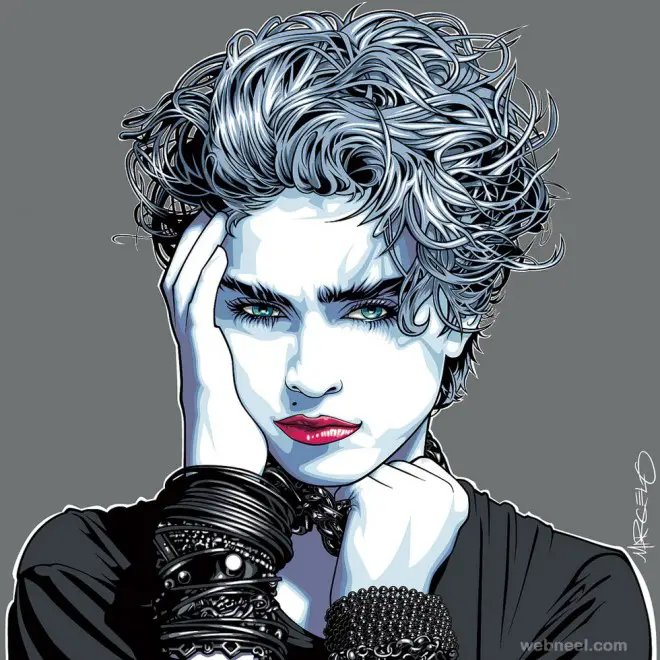Now we can turn the illustrations into embroidery. Artwork is ‘batch' processed to create the multiple embroidery objects that make up a design. The software can recognize the shapes in the artwork – bitmap and vector – and choose the appropriate types of stitches to use.
You can also determine a sewing sequence based on the distance of the seams. Automatic digitizing tools become available when an image is selected. Only one image can be selected at a time.
Generally speaking, vector images retain image quality when resized, while bitmap images cause problems with pixelation and image degradation when enlarged or reduced.
However, the necessary scaling must be done before importing since this operation automatically transforms vector drawings into bitmaps.
To make bitmap images more suitable for automatic digitizing, the software also provides image processing tools and links to graphics applications. Embroidery Digitizing
Auto Digitize Instantly
In a nutshell, creating an embroidery design with the Auto Digitize Instant Embroidery tool is simply a matter of selecting the image you want to convert and clicking the tool.
The system automatically classifies colors into fill or detail colors or simply ignores them. Also, choose the most appropriate stitch types to apply using the default settings.
Even if the image has not been pre-processed with the image preparation tool, ‘Auto Digitize Instant Embroidery' processes and converts it automatically.
Eliminate any unwanted bottom seams. Edit the colors and stitch types as you like.
It can also recognize shapes in illustrations, bitmaps or vector drawings and choose the appropriate stitch types to use.
However, it does provide more control over the conversion settings.
To use the feature, scan or upload an image and edit and process as needed.
Simply you can size down the image in the toolbar named ‘Context' to desired dimensions.
Select the image and click ‘Auto Digitize Embroidery'. If you have not processed the image yet, you will be prompted to do so.
Image colors are automatically categorized into fills or details or omitted entirely.
Select a color from the list and use the ‘Locate' button to preview.
Use the dropdown lists to mark colors as fill or detail colors or to omit them altogether. Fills are always embroidered first and outlines, including borders and small areas, last. Online Shopping Store
Use the up and down buttons to adjust the sewing sequence.
Select a conversion method for color processing.
By default, the colors in the image resemble the closest thread colors in the current ‘Design Palette'. Use the ‘Add colors to palette' option to add the exact colors from the image to the palette.
Adjust the sewing options for the details as you prefer. See below.
Click ‘OK' to process the image.
Sewing Options
The software allows you to adjust the object recognition settings for any color that it identifies as a ‘detail'. A detail can be a centerline, a border, or a small area of the design that you want to embroider last.
If an image color is both fill and detail, you can change the fill color in a graphics application or leave it out for later editing. To adjust detail settings.
Select a sewing style for details from the dropdown list:
Center line: The most appropriate to use for thin lines. This option traces the center of a color identified as a detail with a running stitch.
Satin line:Suitable for use with thicker lines of constant width, usually in large designs.
Rotating Satin: Best suited for use with thick lines or small shapes of varying width.
Click ‘OK' to process the image.
Optionally, add outlines to all blocks by checking the ‘Outlines' checkbox and selecting a color. This has the effect of reinforcing the edges of the shapes with a continuous branched stitch run.
Convert vector artwork
If you have CorelDRAW x6 installed on your computer along with Hatch, other conversion options are available.
Special conversion tools in the software automatically convert vector objects and texts to embroidery objects or letters. In fact, complete vector drawings can be converted into embroidery designs quickly and easily.
When creating embroidery objects, the software determines the optimal stitch and object types for the given shapes. These can be modified as required.
Conclusion
Automatic digitizing tools accept artwork in the raw or processed state. However, the quality of the resulting designs is highly dependent on the type and quality of the original artwork. Vector Services






